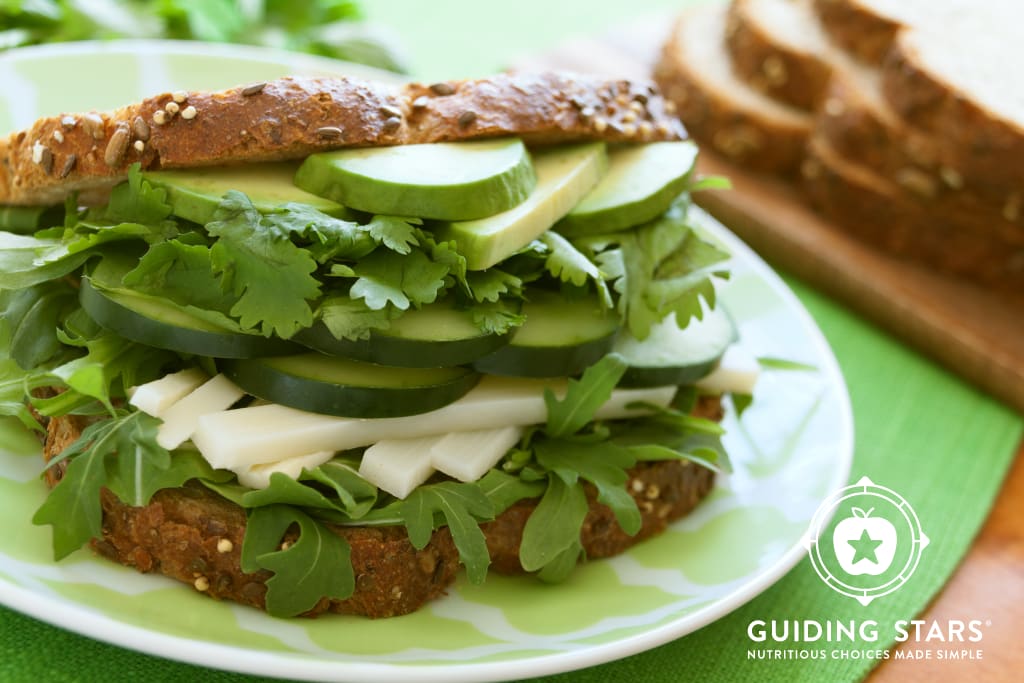People often tell me that they’re “watching what they eat” and “trying not to over do it,” but they aren’t necessarily sure how to quantify just what that means for a given meal or day. These individuals don’t realize it, but the reason they can’t quantify what a serving should be is because they don’t know what it it’s supposed to be. Most of us were never taught what a proper serving is. Therefore, each of us needs to learn serving guidelines and how many of those servings should be enjoyed in a day.
Green Goddess Sandwich
Something like a sandwich may provide a single serving that's complex enough to create a full portion for a meal, which is not true of all recipes.
View recipe »It begins with an understanding of serving vs portion. Yup, they’re different. A serving is the amount that you should be having. Think of a serving as the “exact” amount of a given food. A portion can be made up of one or more servings, but knowing what a serving is in the first place is critical to ensuring you consume the proper portion. Going further, a portion is based on your day and how many servings you can enjoy while staying on track, rather than just “an amount” you feel like having.
Most people consider a portion as the amount you might scoop onto your plate, that looks “about right” or that a restaurant gives you (which no doubt is more than you need). But a portion should be a measured amount based on your day. For example, if you had a big bowl of cereal for breakfast and a sandwich at lunch, then your evening pasta portion can likely only be one or two servings.
There are a few ways to approach serving size education. The first is to use the Diabetic Exchanges (whether you’re diabetic or not). This serving size list offers a framework that we can all benefit from following. At first glance it may seem very restrictive (1/3 cup of rice!), but it’s important to remember that this is a guide to understanding servings. In other words, if you were to have a cup of rice, you’d be having 3 servings. Or, put another way, your portion would be 3 serving sizes.
The other approach to serving sizes that I recommend is the MyPlate guide. This guide to serving sizes can be customized on the MyPlate website to ensure that you are not only consuming correct portions, but that you also know just how many servings from a food group to have in a day based on your personal goals.
Of course, just knowing correct serving size and your personal portions is only one piece of the diet puzzle. You also need to know what a cup looks like or how big a tablespoon is. The best way to master these sizes is to get your hands on the measuring tools themselves. I strongly recommend using these tools while also paying close attention to what that portion looks like on your plate or in your bowl so that you can learn to do it without the measuring tools (and wherever you are).
The bottom line: While your daily portions of a given food may change, the serving size of that food doesn’t. Serving sizes are the building blocks of proper portions and the foundation of a healthy plate that fits within your day and dietary needs.
